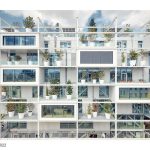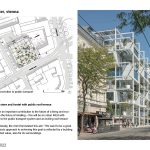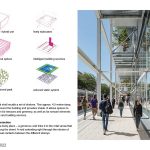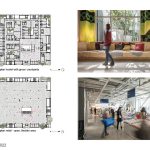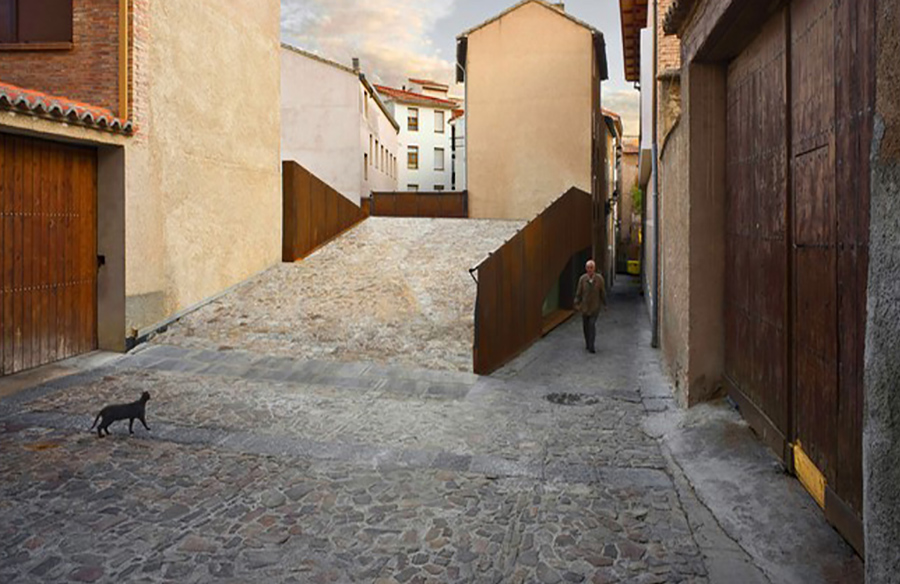The good neighbour
Urban, car-free IKEA furniture store and hostel with public roof terrace
Car-free + urban
This building makes an important contribution to the future of a living and ecological city and also to the future of retailing – this is an urban IKEA with excellent connections to the public transport system and an inviting roof terrace – a good neighbour.
At the briefing stage already, the client formulated the aim: “We want to be a good neighbour”. The architects approach to achieving this goal is reflected by a building that represents an added value, also for its surroundings. The roof terrace accessible to the public that offers somewhere to drink coffee, to relax and to enjoy the view of the city, and the large amount of greenery on all the facades – these are all aspects that contribute to being “a good neighbour”.
Rethinking The Future Awards 2022
First Award | Commercial (Built)

| Project Details | |
| Project Name: | First Car-Free city IKEA |
| Studio Name: | Querkraft Architects |
| Design Team: | querkraft architekten zt gmbh |
| Area: | 29,480 m² |
| Year: | 2021 |
| Location: | Vienna, Austria |
| Consultants: | Ingenieurbüro P. Jung – Building Physics, Kräftner landschaftsarchitektur / Green4Cities (Green Space), Thomas Lorenz ZT GmbH (Structural Engineering) / Werkraum Ingenieure (Competition-Structural Engineering), RHM GmbH (Buidling Services), Werner Consult ZT GmbH (Cost management), TB Eipeldauer + Partner GmbH (Electrical Engineers), FSE Ruhrhofer & Schweitzer GmbH (Fire Protection) |
| Photography Credits: | Christina Häusler, Hertha Hurnaus |
| Text Credits: | querkraft architects |

©Christina Häusler, Hertha Hurnaus
External shelving
The building’s external shell recalls a set of shelves. This 4.3-metre-deep, shelf-like zone runs around the building and provides shade. It allows spaces to expand, provides room for terraces and greenery, as well as for servant elements like lifts, escape stairs and building services.
Openness allows interaction
The entrance level is a lively place – a generous void links it to the retail areas that stretch in front of it along the street. A void extending right through the interior of the building allows visual contacts between the different storeys.
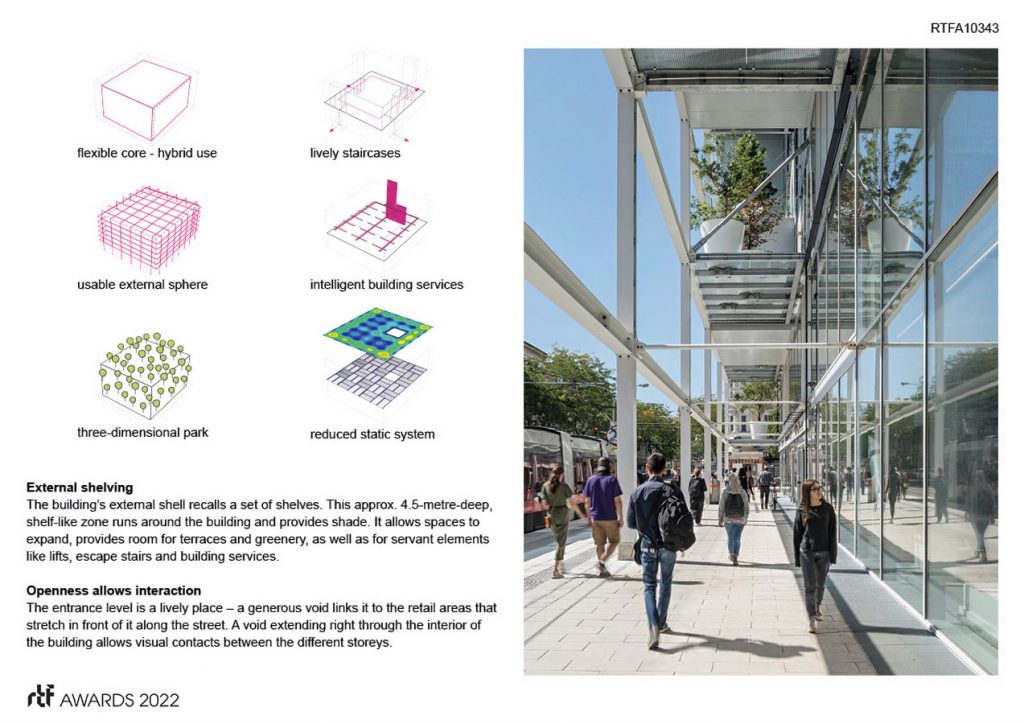
©Christina Häusler, Hertha Hurnaus
160 trees on and around the building
Trees on the facade and on the roof have a perceptible impact on the microclimate. As the trees could be placed at different heights and depths in the building there is more planting than would be possible on the building’s ground area. The climbing plants and trees of the IKEA furniture store have a cooling and humidifying effect – like a kind of natural air conditioning system. The air temperature improves at the pedestrian level, too. Computer simulations indicate a relevant temperature decrease of 1.5°C.
Centralised + efficient building services
To ensure efficient conditioning of the building the services are based on a simple principle: short distances and direct access. In the building the infrastructure is left visible, which increases the perceived height of the space.
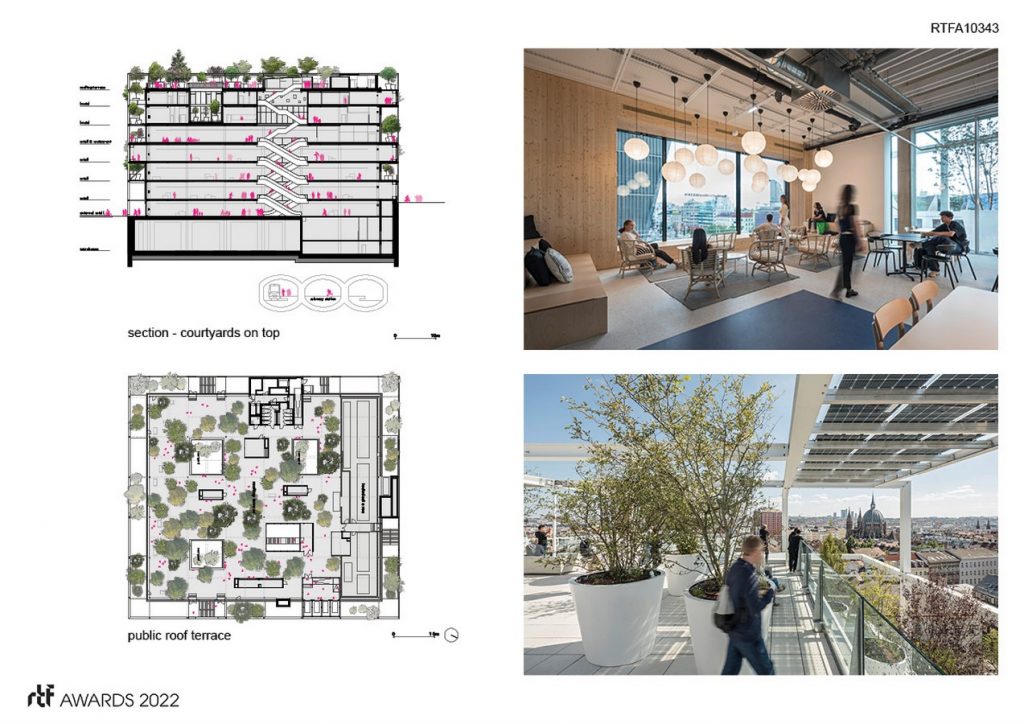
©Christina Häusler, Hertha Hurnaus
Mix of functions through open floor plans
The prefabricated reinforced concrete columns stand on a c. 10 x 10-metre grid that allows flexibility in the use and design of the spaces. Adaptations to meet changing demands can be made easily, as is already becoming apparent. IKEA retail occupies the lower floors, the Jo&Joe Hostel with 345 beds is located on the top two floors. This mix creates a building that is alive 24 hours a day, 7 days a week.
- ©Christina Häusler, Hertha Hurnaus
- ©Christina Häusler, Hertha Hurnaus
- ©Christina Häusler, Hertha Hurnaus
